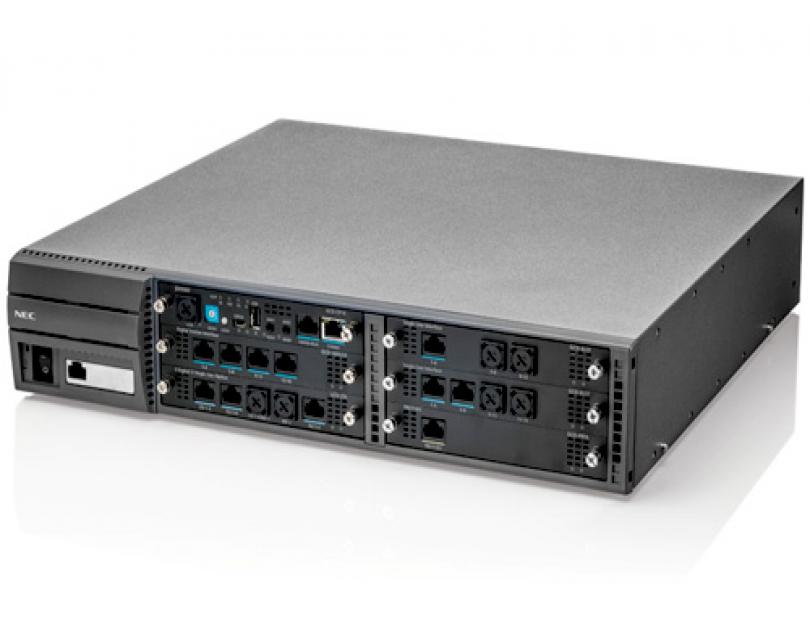ELECTRONIC PRIVATE AUTOMATIC BRANCH EXCHANGE (EPABX)
Context
In most business environments, telephone calls are typically handled by a receptionist or directed to specific extensions using an internal intercom system. The technology enabling this seamless communication, both within and outside the organisation, is called EPABX. This system allows users to answer, transfer or forward calls as needed. It facilitates internal communication between different departments or branches, streamlining workplace connectivity.
What is Electronic Private Automatic Branch Exchange (EPABX)?
- EPABX stands for Electronic Private Automatic Branch Exchange, a private telephone network used by organizations and businesses for various purposes, including internal and external communication.
- EPABX is used by large enterprises to improve employee communication. The technology can also be used to communicate with clients on the outside. The method is useful in that it keeps everyone informed. Even the manager has immediate access to the worker on the continuous line. It's rare to have such smooth communication in a huge corporation. EPABX, on the other hand, bridges the distance between staff.
- Organizations can save money by using an electronic private automated branch exchange instead of running a wire from every phone in the building to the telephone exchange. As a result, the organization can save a significant amount of money.
- Electronic Private Automatic Branch Exchange (EPABX) is a telephone switching system used within an organization—such as a business, hospital, or school—that allows internal communication between users and also manages external telephone lines.
- It is an automated telephone exchange system that is privately owned and used by an organization. The main purpose of EPABX is to manage multiple telephone lines without the need for a human operator. It handles both internal calls (within the organization) and external calls (to and from the outside world)
How does EPABX (Electronic Private Automatic Branch Exchange) System Work?


The EPABX functions similarly to an exchange, sending, receiving, and forwarding calls from the company to the outside world. Several lines from the building's outside terminate at the PBX. In addition, the PBX switchboard receives multiple lines from within the building.
The external lines might come from various of ISPs and communicate in a completely different method. PSTN, GSM/CDMA, VoIP, and Satellite are examples of external communication sources. The majority of the time, conventional phones are used for internal communication.
A typical
electronic private branch exchange does not require an operator. All calls are handled by a computer onboard, which switches them according to called numbers. As a result, it saves a lot of time and work when it comes to transferring incoming and departing calls. Large organizations rely on communication, and hundreds of calls are made at once in large enterprises. As a result, computers save time and effort by effortlessly transferring calls.
Advantages of EPABX System
Employees in an office setting can share phone lines. A single phone line can be used to connect many extensions, lowering overall costs. External calls may be routed through a single incoming mode and then directed to the appropriate extension number.
The physical hub of an
EPABX system is moderate and requires little space. As a result, there are no space limits.
The foundational network of a business phone system may also be simply expanded as the firm grows and its communication demands change.
Additional features such as Interactive Voice Response (IVR), Least Cost Routing, and Voice Mail Services not only boost efficiency and productivity but also save office costs.
How are incoming calls managed?
The handling of incoming calls varies depending on how the EPABX system is set up. Calls from the Public Switched Telephone Network (PSTN) are directed to one of the available trunk lines connected to the EPABX. In older configurations, a receptionist was required to manually transfer the calls. However, in modern systems, automatic EPABX allows callers to reach specific extensions directly by dialing them.
More sophisticated digital EPABX systems can be configured with interactive voice response (IVR) menus. These menus prompt callers to input the desired extension number or automatically forward the call to preset destinations, such as the front desk. The internal switching mechanism then connects the call to the selected extension without needing human assistance
How does the switching mechanism work?
- The switching mechanism serves as the core function of any EPABX system, responsible for directing calls to their intended extensions.
- In the earlier models from the 1970s and 1980s, electromechanical switching devices like crossbar relays were commonly used. These systems operated in a way similar to turning a ceiling fan's speed regulator—where adjusting a dial shifted internal components to complete a circuit.
- When a user made a call, an electromagnet would trigger a copper strip to move, creating a physical bridge between two lines, thus allowing voice transmission between phones.
- A basic electrical switch works like a faucet—flip it on and electricity flows, flip it off and it stops. However, the switches in EPABX systems are much more sophisticated.
- One of the simplest types is the "single pole, single throw" switch—comparable to a regular light switch. A step up in complexity is the "single pole, double throw" switch, which has one input but two possible output paths—similar to a fan regulator with multiple speed settings. The "double pole, double throw" switch is even more advanced, with two input sources and four output options.
- Think of EPABX call routing like managing a railway yard. An incoming call acts like a train arriving at a major station with several platforms. The EPABX functions like the railway signal system, ensuring the call reaches the right extension, much like a train being guided to the correct platform.
- When someone dials an internal number, the EPABX system activates a series of relay switches, connecting the caller to the appropriate recipient. This process resembles aligning railway tracks to ensure a train travels smoothly to its destination. Once the call ends, the relays reset, ready for the next communication.
- You can also imagine the switching structure as a layered network. The main line splits into several branch lines—like platforms—and each branch leads to a set of sub-extensions.
- For instance, branch 1 might contain extensions 11 to 14; branch 2, extensions 21 to 24; and so on. So, if someone calls extension 104, the switch activates a specific relay path that directs the call through the right combination of connections to reach its endpoint
Download Pdf





